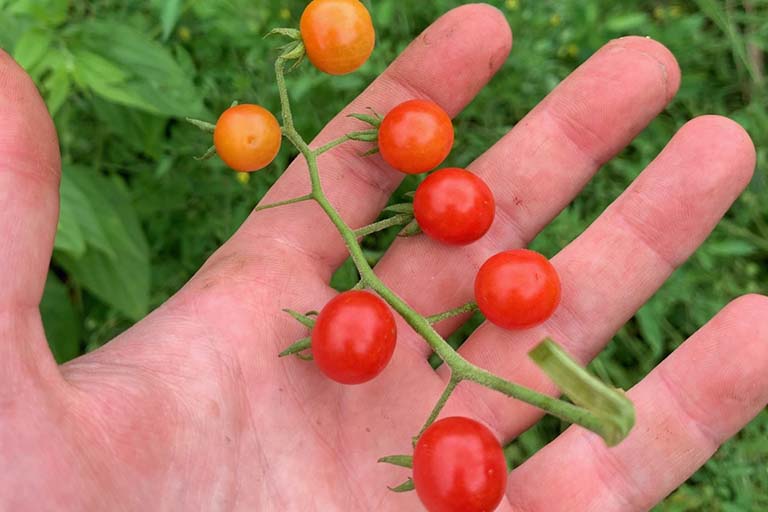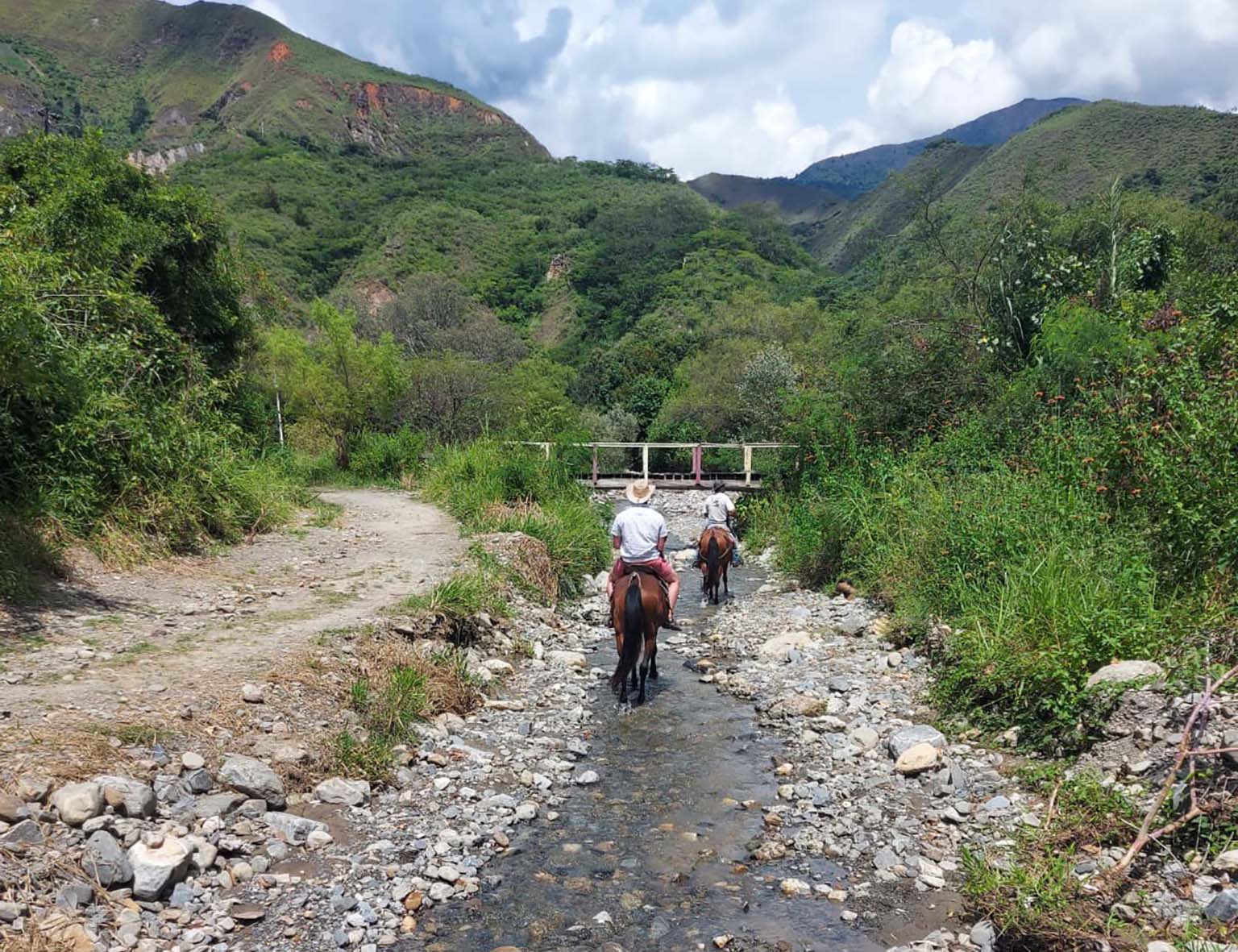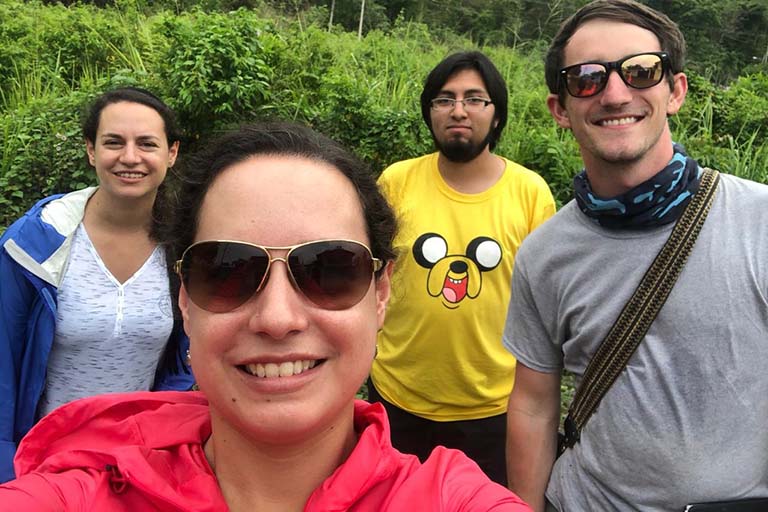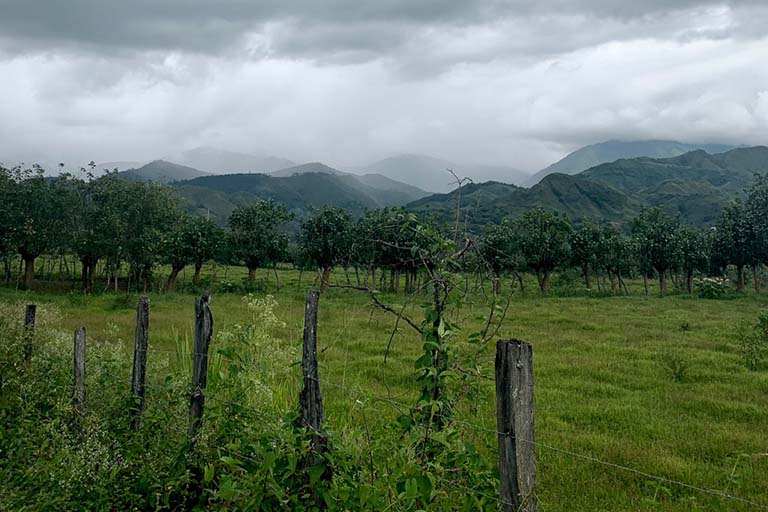Bloomington, Indiana, USA
February 28, 2022
Matt Gibson studies evolutionary processes—allowing him to not only tackle important scientific questions in the field of evolutionary biology, but also to find ways to contribute to solving food insecurity caused by climate change.
Gibson is a Ph.D. student in the Evolution, Ecology, and Behavior Graduate Program at Indiana University Bloomington and a member in the lab of Leonie Moyle, a professor in the IU College of Arts and Sciences Department of Biology. He obtained his B.S. degree in genetics from the University of Kansas and plans to defend his Ph.D. dissertation at IU in May.
Gibson uses population genetics and computing in his quest to understand the genetic mechanisms of adaptation, especially in response to abiotic climatic variation such as temperature, sunlight, and moisture level. He carries out his research using the plant species Solanum pimpinellifolium, a wild relative of the domesticated tomato.
 Fruits of S. pimpinelifollium. Photo taken in Quevedo, Ecuador. Photo courtesy of Matt Gibson
Fruits of S. pimpinelifollium. Photo taken in Quevedo, Ecuador. Photo courtesy of Matt Gibson
This species—native to Ecuador and Peru—inhabits both hot, dry, salty coastal habitats as well as wet, cool inland habitats at mid elevation in the Andes Mountains. This extreme ecological variation represents an important selective gradient in the species. Using this natural diversity, Gibson wants to learn what genes/traits are under selection and how the different populations evolved to occupy such different habitats.
He explains that while adaptation is generally considered the fundamental mechanism responsible for much of the biodiversity we see in the wild, we still have a poor grasp of its genetic basis in most species. Studying the genetic targets of adaptation to abiotic climatic factors using a wild tomato species as his research model also means his findings might help us to understand climate change’s effects on crop productivity.

The USDA National Institute of Food and Agriculture (NIFA) awarded Gibson a nearly $120,000 Agriculture and Food Research Initiative Predoctoral Fellowship in June 2021. NIFA’s Agriculture and Food Research Initiative helps to develop new scientists and professionals to enter research, education, and/or extension fields within the food and agricultural sciences—including the private sector, government, or academia. The initiative's fellowships aim to cultivate future leaders who can solve emerging agricultural challenges of the 21st century.
Thanks to the fellowship, Gibson has been able to continue field work and genome sequencing in his investigation of the genetics of coastal-inland adaptation in S. pimpinellifolium. Gibson collaborates with researchers from Universidad San Francisco de Quito on the field work component of his research. He has made two trips to Ecuador—one in January 2020 and one in January 2022—and traveled throughout the country collecting leaf samples from S. pimpinellifolium for genomic DNA analysis. Gibson and his colleagues are now using computational approaches to model the population and evolutionary history of S. pimpinellifolium and to identify genetic variants which are likely under selection in coastal and/or highland habitats.

Gibson and research team members in the field. From left to right are Gabriella Pozo, Maria Jose Pozo, Diego Urquia, and Matt Gibson. Photo taken in Esmeraldas, Ecuador. Photo courtesy of Matt Gibson

This pasture in Catamayo, Ecuador, is typical of the team's field sites. The Andes Mountains are seen the background. Photo courtesy of Matt Gibson
The longer-term goal of the project is to evaluate the phenotypic effect of these genetic variants through experiments with plants grown under manipulated environmental conditions, to test whether genetic variants identified as under selection have measurable effects on survival. Variants which have significant effects on survival in, for example, dry/hot environments, will then be strong candidates for use in breeding experiments that could improve drought resiliency in the domesticated tomato.
If you’ve never searched for your study species on horseback, then you might be doing it wrong. Gibson is on horseback on the left. Photo taken in Vilcabamba, Ecuador. Andes Mountains are in the background. Photo courtesy of Matt Gibson